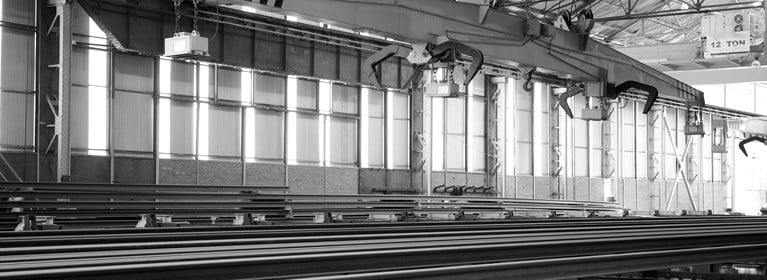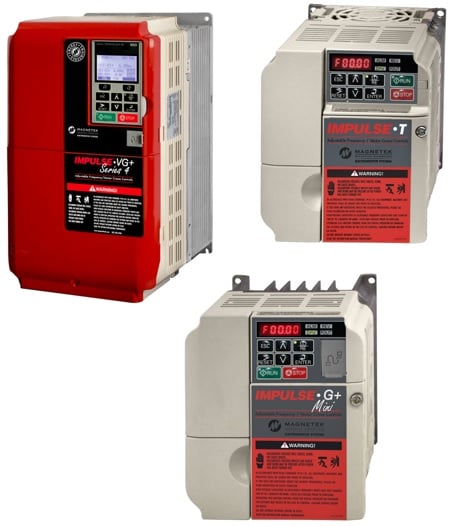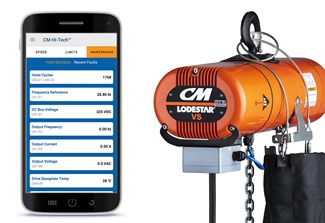
7 Benefits of Using Variable Frequency Drives (VFDs) to Control Your Crane or Hoist
Mining, Petroleum and Gas | Aerospace | Manufacturing | Crane Systems | Safety and Training | by Casey Cummins | 18 Feb 2020
 Variable frequency drives, or VFDs, are a type of AC motor controller that drive an electric motor by varying the frequency and voltage supplied to it. VFDs are also commonly known as variable speed or adjustable speed drives, AC drives, micro-drives or inverters – depending on the industry or application.
Variable frequency drives, or VFDs, are a type of AC motor controller that drive an electric motor by varying the frequency and voltage supplied to it. VFDs are also commonly known as variable speed or adjustable speed drives, AC drives, micro-drives or inverters – depending on the industry or application.
In the material handling industry, variable frequency drive controls are often used in electric hoists as well as in overhead cranes and lifting systems. Drives are designed around a microprocessor, which allows for the creation of programmable functions for specific applications.
So, what are the benefits of using a VFD to control your hoist or crane?
- Greater Speed Adjustment: VFD controls let you choose from multiple speeds, allowing you to customize your hoist controls to your application.
- Improved Load Control: Positioning a load using a single-speed hoist may cause shock loading or load swings. A VFD allows for smooth operation by gradually slowing down a load. Variable frequency drives also allow for smooth acceleration to prevent load swings in the traverse motions.
- Duty Cycles: CMAA Class A-F. A VFD is concisely matched with a braking resistor, depending on the duty cycle of the motion. A regenerative drive may also be used, which is not dependent on duty cycle.
- Efficiency: A VFD will only consume the power that’s needed, thus saving energy compared to contactors and soft-starters.
- Increased Hoist Life: Some variable frequency drives provide thermal overload and overcurrent protection for the hoist motor, prolonging its life. VFDs also utilize a ramp-down-to-stop method of braking rather than using brake shoes to slow down. The brake is only used for parking and emergency situations, which prolongs brake life.
- Regenerative Energy: Deceleration and lowering of a hoist creates regenerative energy produced by the motor. This energy can be transformed into heat using a braking resistor or conditioned and send back to the source, thus netting energy savings. An AC regenerative drive will redistribute that energy, which would otherwise be wasted when converted to heat with a braking resistor.
- Digital Diagnostics: Aid in maintenance and troubleshooting on the machine or remotely.
Magnetek VFDs are designed for crane and hoist applications with various performance and safety features. A few of these features include:
- Safe Torque Off: Provides a redundant hardware safety circuit that guarantees motor and brake power are removed when an E-STOP switch or safety controller opens the drive input, eliminating the need for external disconnects.
- Torque Proving: The motor is pre-torqued to guarantee that the load can be held before opening the brake.
- Load Check: Continuously checks for hoist overloads and prevents the hoist from lifting when an overload condition is detected.
- Brake Checks: Monitors the opening and closing of a brake to ensure that it is safe and healthy.
- Micro-Speed: Allows the operator to make slow, precise movements.
- Electronic Programmable Limit Switches: Allows slow down and stop limits without physically geared limit switches.
Lodestar VS with Intelli-Connect
The CM Lodestar VS is now available with Intelli-Connect™ Diagnostics and Analytics technology. Intelli-Connect enables quick and easy programming, maintenance, monitoring, and troubleshooting of the Lodestar – all from a tablet or smartphone.
How does it work? Using the Intelli-Connect Mobile and Mobile+ apps, you can wirelessly access detailed information right from the plant floor, without the need to attach a programming cable. Intelli-Connect is available as an option on all new Lodestar VS units or in a retrofit kit for units already in service.


 South Africa - EN
South Africa - EN


